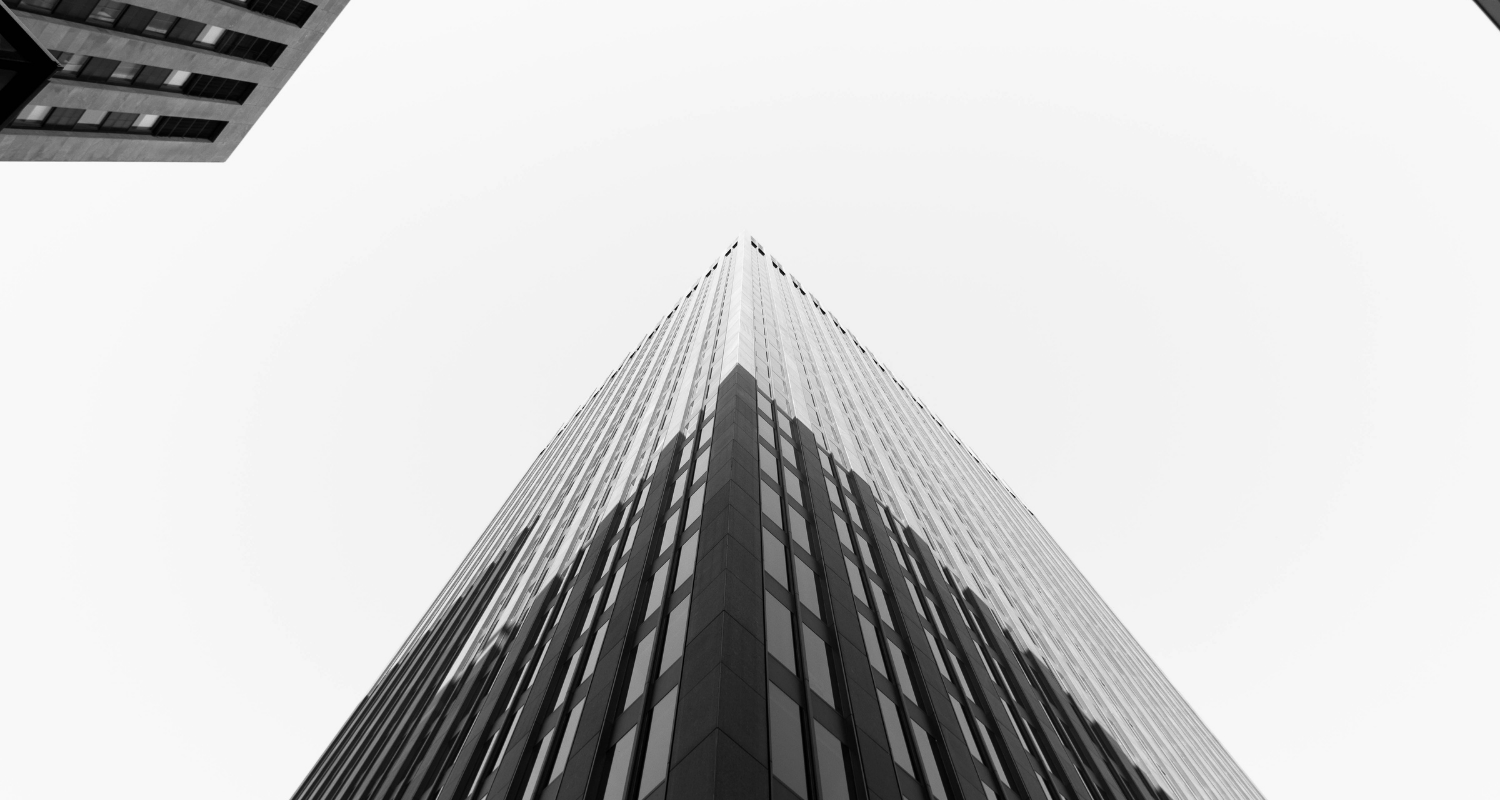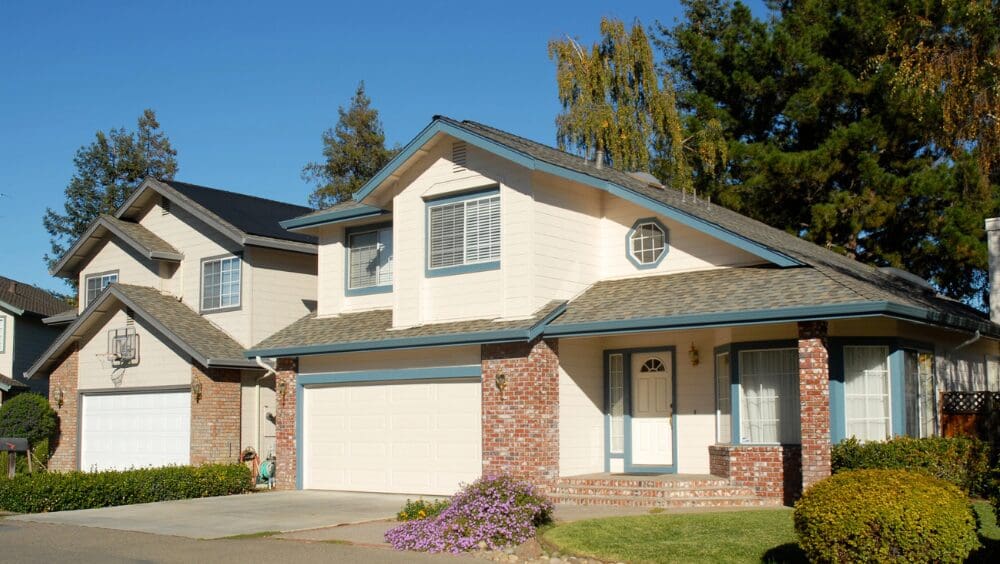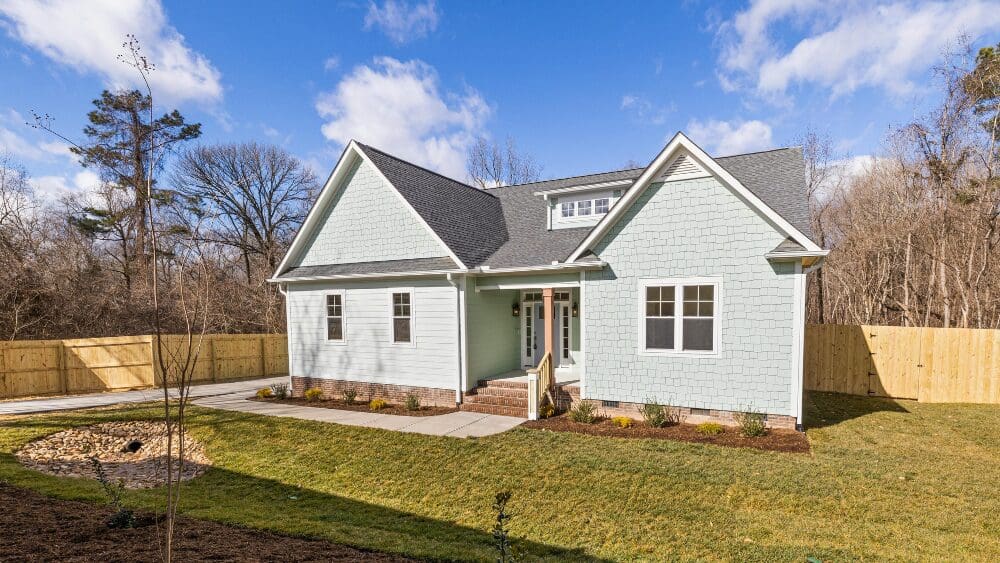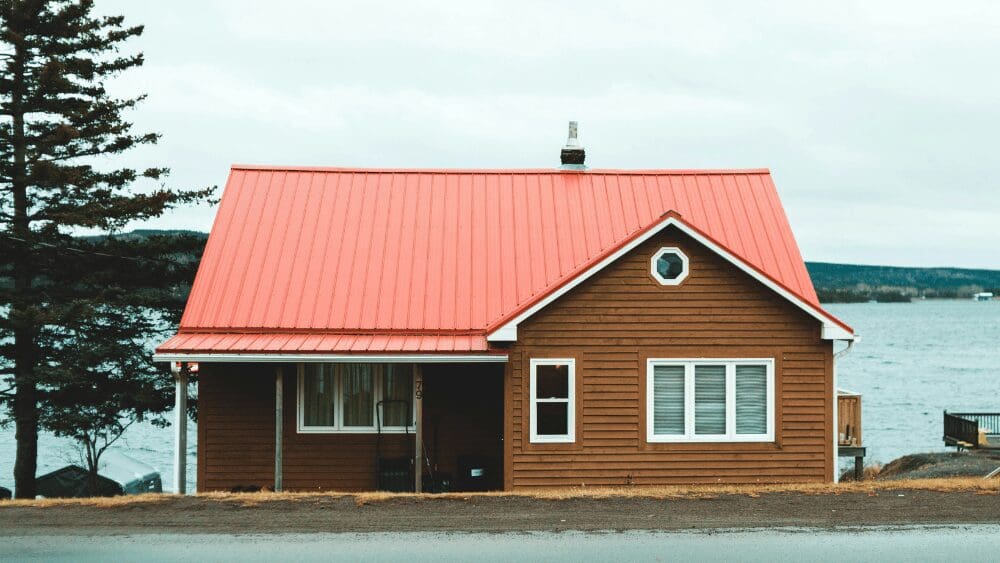
You’re dreaming of buying a home, and you’ve already got your paint swatches and furniture all picked out. The only problem? You’re not sure you have enough funds for a down payment. Is there such a thing as down payment grants? It’s a common challenge for buyers, especially those moving into homeownership for the first time. In fact, a recent study by the Urban Institute found that 68% of renters said saving for a down payment is a major obstacle for homeownership. There are a lot of misconceptions around down payments that prevent would-be buyers from getting in the game. For example, 62% of Americans believe you need to put 20% down on a home (not true!), when in reality, the median down payment for first-time buyers is just 6%. If you’re ready to buy a home, but you don’t have a ton of money saved, you may be able to afford a larger down payment than you think — with a little help. There are tons of programs out there to help buyers get into homes, from loans that offer down payments as low as 3%, to special grants for first-time buyers. We talked to top real estate agent Claire Paris, who completes 14% more transactions than the average agent in Portland, Oregon, to walk us through what buyers can expect from down payment assistance programs and how you can find one in your area.
Not every buyer has a huge stash of money saved up to buy a home. Though many loan programs go as low as 3% down, that’s still beyond the means of many homebuyers — especially those in hyper-competitive or expensive real estate markets. Plus, for many Americans, it’s simply not feasible to wait to buy a home until they’ve saved up for a down payment. Thankfully, there are tons of programs out there to help regular homebuyers achieve home ownership, even if they don’t have anywhere close to 20% saved up. There are two main types of down payment assistance programs. Down payment grants are gifts that help you make a down payment on a home. These down payment assistance (DPA) grants tend to be issued on a local level, so you’ll need an experienced real estate team to help you track them down. Many of these are matching programs, where the fund matches your savings 1:1, 2:1, 3:1, or in some cases, even 4:1 — typically, the matching will cap when your down payment reaches 20% of the home’s purchase price. The best part about these down payment grants? They usually don’t need to be paid back if you follow all the program guidelines. Free money? Yes please! Another way you can get down payment assistance is by taking out a second mortgage. This might sound like a scary option, but hear us out! Some of these DPA loans have deferred payments until you sell or refinance the home, and others are forgiven completely once you’ve lived in the home a certain number of years. Plus, many of these down payment-oriented second mortgages feature low- or no-interest options. So, if you plan to stay put for a bit, a second mortgage might be a solid option for you. Many DPA programs can be used to cover closing costs, too, as that’s another large chunk of change you’ll owe at closing. One other thing to note is that the majority of these programs are available on a local level. Though there are a few national options (we’ll get to those soon!), there are thousands of programs available at the state and local levels. How much you’ll save using a down payment assistance program like a grant or a second mortgage depends on the program, your income, the home itself, and a lot of other factors. However, a recent RealtyTrac report found that homebuyers saved an average of $17,776 using down payment assistance programs. That number includes $5,965 saved on the down payment, and $11,801 saved over the life of the loan via lowered mortgage payments. In most of the counties the report examined, down payment assistance programs covered an average of 3% of the home purchase. Since many loans start at 3% down, it’s easy to see how one of these programs can boost a would-be buyer to homeowner status. Not everyone qualifies for down payment grants. Typically, these programs are reserved for buyers who truly need help with their home purchase. “Usually there are income limitations, and the house has to be in a certain neighborhood,” explains Paris. “Those are the two most common qualifications.” To qualify for most DPA programs, you’ll have to meet the following requirements: Here’s the thing: Not every lender works with DPA programs, and the funding schedules can be opaque. That’s where you need to rely on your experienced real estate team. “Most people don’t understand that not every lender can do every program,” Paris explains. “A lender is not Walmart. They don’t have access to every single thing that’s available under the sun.” For example, a lender might accept a specific DPA grant from a local organization, but it might be unable to work with you on a more well-known statewide second mortgage program. Paris says that in a perfect world, buyers who want to use DPA programs should first work with an agent who specializes in helping first-time, middle income, and lower income buyers and who has direct knowledge of these programs. The agent can then help you figure out what your needs are, and they can also connect you with qualifying lenders. What about loan programs? Some DPA programs work with every type of loan, whether conventional, FHA, VA, or USDA. But other programs work exclusively with certain types of loans and products, so you may have to be flexible in your approach. Make sure to read the fine print and go over the details of the DPA with your lender first, as these programs can be tricky! As we mentioned, most down payment assistance programs are available at the state and municipal level. But there are still a few major national programs you should know about. The Chenoa Fund is a national program that offers DPA second mortgages on conventional and FHA loans. What it does: Get a DPA second mortgage at a low interest rate or zero interest. One Chenoa Fund option even forgives the loan entirely after a certain number of on-time payments. Who it’s for: Creditworthy, low- and moderate-income buyers. Bank of America has two of its own DPA programs that it advertises nationally. Our America’s Home Grant program offers credits on closing costs. What it does: Get a closing cost credit up to $7,500 to be used on non-recurring closing costs such as title, recording, or to buy discount points that lower the mortgage rate. Who it’s for: Buyers must meet income limitations and purchase homes in certain geographic regions. The home must be used for a primary residence. Bank of America’s other DPA program is called Our Down Payment Grant, and it covers — you guessed it — down payment funds! What it does: Get a down payment grant of up to 3% of the purchase price, up to $10,000. Who it’s for: Buyers must meet income limitations and purchase homes in certain geographic regions. The home must be used for a primary residence, and the grant can only be applied to two specific mortgage products. The National Homebuyers Fund, Inc. is a non-profit that works to expand homeownership opportunities and strengthen communities across the U.S. It’s helped more than 41,000 Americans purchase homes. The best part? NHF funds are typically gift funds, meaning if you follow all the program guidelines, they don’t have to be repaid. What it does: Get up to 5% of the loan amount for down payment or closing cost assistance. The money is provided in one of two ways: 1) a gift that does not need to be repaid, or 2) a zero-interest second mortgage that’s forgiven after three years of on-time payments. Who it’s for: The NHF is one of the more flexible programs you’ll find for DPA. You don’t need to be a first-time buyer, and the income limits are more generous than with most programs. This might be a good place to start if you’re not sure you’ll qualify elsewhere. Chase Bank also offers its own national DPA program, which is called the Chase Homebuyer Grant℠. What it does: Get a $2,500 grant toward closing costs or points to lower your interest rate. You can also get an additional $500 if you complete a homebuyer education course. Who it’s for: Buyers must use the Chase DreaMaker program, and purchase a primary residence. The FHA funds its own down payment assistance program, though you’ll typically find this program through your state. What it does: Get a zero-interest second mortgage for up to 4% of the loan amount (some states might go higher). The loan is forgiven after three years of on-time payments. Who it’s for: The FHA DPA program is for families with demonstrated financial stability. You don’t need to be a first-time buyer to take advantage of this program, but you do need to have stable income and a satisfactory credit history. The NeighborhoodLIFT Program was created through a partnership between Wells Fargo and NeighborWorks America. What it does: Get a forgivable, zero-interest second mortgage with no required payments that can be used for down payment and closing costs. After you’ve lived in the home for five years, the loan is forgivable. Who it’s for: This program is not exclusively reserved for first-time buyers. The home has to be a primary residence, and it must be located in a designated NeighborhoodLIFT area. Eligible buyers must take a homebuyer education course to qualify. The vast majority of DPA programs are found at the state and local level. It can be frustrating navigating all the options, but there are a few key resources you can utilize to research DPA programs near you:
It’s worth mentioning that besides down payment assistance programs, there are plenty of low or no down payment loan programs available for buyers who don’t have a ton of savings. These don’t technically qualify as DPAs because they’re standard loan programs, but it’s good to know your options! With conventional loans, you can put down as little as 3%, provided you meet the eligibility requirements. There are also several conventional loan programs geared toward first-time and low income buyers, including Fannie Mae HomeReady and HomePath Ready Buyer, and Freddie Mac HomeOne and Home Possible. Minimum down payment required: 3% for qualified buyers These loans are backed by the Federal Housing Administration, and they’re geared toward buyers with lower credit and savings. One thing to keep in mind, though, is that if you put less than 10% down, FHA loans require mortgage insurance for the life of the loan. Minimum down payment required: 3.5% USDA loans are only available in certain rural areas (though those areas cover around 97% of the country), and buyers must meet program income requirements. But on the upside, these loans go as low as 0% down. Minimum down payment required: 0% VA loans are available for active duty service members, veterans, and qualifying spouses. If you qualify, you can put as little as 0% down, and you won’t have to pay mortgage insurance. Minimum down payment required: 0% Another way you could potentially afford a home with less savings is through special HUD programs like Good Neighbor Next Door and Dollar Homes. These programs offer homes at steep discounts, but they’re only available for homes in specific areas, and not every buyer qualifies. So if you’re planning to go this route, make sure you carefully research these options and work with an experienced real estate team. Okay, you’re convinced you need down payment assistance, but you’re not sure where to start. That’s normal! Most buyers don’t even know these programs exist, much less where to find them. Here’s your simple, step-by-step process for how to get down payment assistance. First thing’s first: you’ll need to find the right agent, with specific experience in using these programs. How do you do that? First, narrow your search to agents who are experienced at working with first time, middle income and low income buyers. When you’re interviewing agents, Paris advises asking point-blank if they’ve ever helped a buyer with DPA before. “I would ask them, ‘Have you ever helped someone with a down payment assistance grant?’” Paris says. “If you get a long stare, then they probably don’t know much about these programs.” Remember: not only will you need to qualify for the program, but you’ll also need to work with a qualifying lender. An agent who’s never been through the process may be in over their head, so make sure you find an expert who’s been there, done that. Are you looking for help with the down payment, or are you hoping to cover closing costs? Do you have some money saved up already that could qualify for a down payment matching program, or will you need the DPA funds to cover the entirety of your down payment? This is where that experienced agent will come in, because they can help guide you to the right DPA program for your specific needs. Work with your agent to research local programs, and then choose the one that best fits your unique home buying needs. Remember how we said only certain lenders can handle DPA programs? Well, once you’ve chosen the ideal DPA program to get you over the down payment hump, you’ll want to reach out to the specific qualifying lender who works with that program. Your agent can help you identify which lenders work with each program. Contact the lender and tell your loan officer that you’re looking to utilize the DPA program, and ask how you can apply. They’ll guide you through the process of applying for the grant or second loan and applying for your home loan. After you’ve applied with your lender and the DPA program and been approved, it’s all about going through the closing process and moving into your new home. Congratulations — it’s a seriously impressive accomplishment to not only buy a home, but save money while you’re at it!What’s down payment assistance, or a down payment grant?
Down payment grants
Second mortgages
How much could you save on your home with a down payment grant?
Who qualifies for down payment help?
What’s the deal with qualifying lenders?
National down payment assistance programs
1. The Chenoa Fund
2. Bank of America Our America’s Home Grant program
3. Bank of America Our Down Payment Grant program
4. National Homebuyers Fund
5. Chase Homebuyer Grant℠
6. FHA Within Reach Down Payment Assistance program
7. The NeighborhoodLIFT Program
8. State and local programs
Other options for low down payments
Conventional loans
FHA loans
USDA loans
VA loans
How to get down payment assistance in 4 easy steps
Step 1: Find the right agent
Step 2: Assess your needs and choose a DPA program
Step 3: Apply with a qualified lender
Step 4: Close and move!



